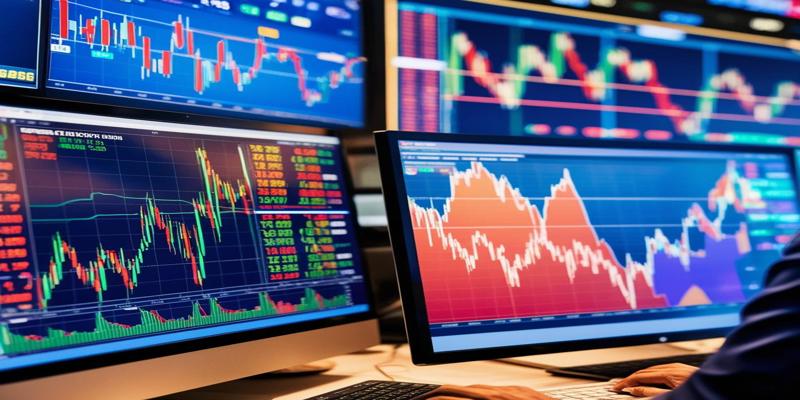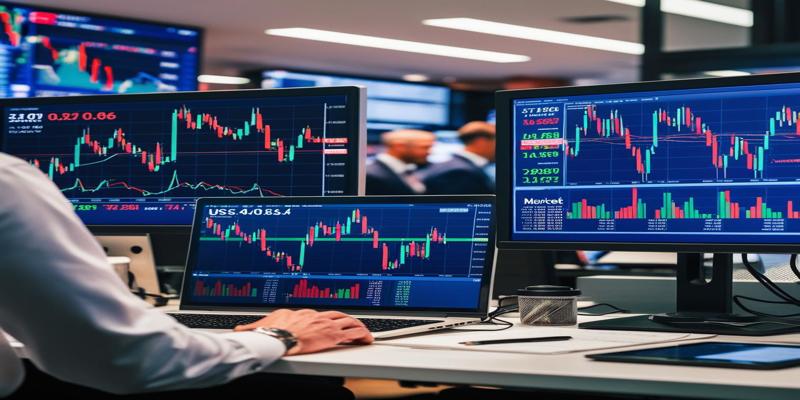Balancing Automation and Manual Trading with Forex
Dec 06, 2024 By Aldrich Acheson
In the hurry-scurry world of forex trading, you try to find leads to remain ahead of the competition. With increasing technological advancement, automation has emerged as a potent force that promises efficiency and minimum loss due to human error. However, human intuition is priceless in trading forex's complex and ever-changing landscape.
The Rise of Automation in Forex Trading

Over the years, the forex market has shifted towards automation, changing how traders approach this high-speed financial playground. With this technological advancement, several opportunities and challenges have emerged concerning currency trading.
Algorithmic Trading Takes Center Stage
Algorithmic trading, propelled by advanced software and artificial intelligence, is a growing feature of the forex markets. Such automated systems can process large volumes of information, detect patterns, and execute trades in a fraction of a second, beyond human traders in many instances, speaking of efficiency and reaction time.
Benefits of Automated Forex Trading
The advantages of automation for forex traders include the following:
- Emotion-free trading: Algorithms stick to predefined rules, thereby eliminating emotional decision-making.
- 24/7 market monitoring: Automated systems can operate around the clock and thus capitalize on opportunities in different time zones.
- Backtesting capabilities: Traders can test strategies using historical data before exposure to natural capital.
- High speed and accuracy: Automated systems can execute trades faster and more precisely than human traders.
Challenges and Limitations
As brilliant as all this technology may sound, it has its downside. Freak risks like flash crashes or increased market volatility can occur in a market utterly dependent on algorithms. Thirdly, automated systems might not be flexible in sudden, unforeseen circumstances, where human intuition and judgment could serve better.
The Benefits and Drawbacks of Automated Trading Systems

Advantages of Automation in Forex
Some of the key reasons why automated trading systems can make so much sense for forex traders are fast and Accurate Execution: They can execute trades with super speeds and accuracy; therefore, any market opportunities that arise round the clock can be taken advantage of without fatigue or emotional influence. They also allow the trader to implement his strategy, following predefined rules without deviation consistently. Automation is almost a prerequisite for high-frequency traders trying to be competitive in today's markets.
Potential Pitfalls to Consider
On the other hand, these automated systems also have several disadvantages. They need to gain the sensitivity of judgment and flexibility present with human traders. They may miss situations that depend on context or continue to trade when markets behave unusually. If unchecked, technical glitches or connectivity issues can cause massive losses. Apart from that, there is every risk of over-optimization, with systems fine-tuned to past data performing abysmally in live markets.
The Continued Importance of Human Judgment in Forex
In today's world dominated by algorithms and automated trading systems, it is easy to forget the critical role human judgment plays in a forex market. As much as automation has changed the way trading is carried out, the human touch remains indispensable for many reasons.
Interpreting Complex Market Dynamics
Geopolitical events, economic indicators, and market sentiment drive the Forex market. While algorithms can process a lot of data, they are only sometimes great at understanding complex information or events that do not fit in a box. Human traders can synthesize complex information and draw insights from disparate sources. Therefore, they can frequently spot opportunities or risks that can evade automated systems.
Adapting to Rapid Changes
However, the forex market is famously volatile and can instantly change due to sudden, unforeseen events. Human traders may adapt to such changes in strategy right away, something that pre-programmed algorithms lack. This flexibility allows for more dynamic decision-making, especially during market turbulence or black swan events.
Emotional Intelligence in Trading
While emotions can sometimes make a trader engage in poor trading, emotional intelligence is an added virtue in forex trading. The human trader-seasoned ones know what market sentiment and the psychology of other market participants might be; they make automatic decisions based on years of experience. This "gut feeling" often complements data-driven analysis, making for more holistic trading strategies.
How to Find the Right Balance Between Automation and Human Input
The balance between automation and human intervention is the key to long-term success in forex trading. Automation offers particular efficiencies and consistency, while the human element brings adaptability and intuition.
Assess Your Trading Style and Goals
First, recognize your trading strategy and goals. Are you a day trader looking for a quick buck, or are you a long-term investor satisfied with slow and steady growth? Knowing your strategy will dictate how much you want to automate.
Start with Partial Automation
Apply incremental steps to automate tasks such as data analysis or trade execution. In that manner, you retain control but enjoy the efficiencies of automation. As confidence builds, wider scopes can be allowed for automation within your trading system.
Regularly Review and Adjust
Set up a review cycle for your trading performance and the efficiency of the automated systems. Be prepared to adjust to any market conditions and changing skills that you will have acquired. Constant review guarantees a strategy stays on course and in step with your goals.
Maintain Human Oversight
Even with advanced automation, human oversight is only partially dispensable. Design a system of monitoring automated trades and intervening where necessary. This can be as simple as setting alerts over unusual market activity or even a periodic review of trade logs for possible problems that might arise.
Critical Takeaways for Leveraging Both Human and Automated Trading
The key to success in this ever-changing forex market is balancing human intuition and automated systems. Here's how you can implement the best of both approaches: Complement, don't replace
Complement, Don't Replace
Automation is great for executing repetitive tasks precisely, but it needs the adaptability and intuition human traders bring. Consider automation not as a replacement but as a solid complement to enhance your trading strategy. Let the algorithms handle the routine trades while focusing your human expertise on complex market analysis and decision-making.
Continuous Learning and Adaptation
Forex is a dynamic market; hence, the trader must change with its tides. Regularly review and update your automated systems to ensure they function effectively in changing market conditions. Meanwhile, invest in your education and skills development parallel to the above step. This dual approach lets you refine your automated strategies while sharpening your analytical axes.
Conclusion
A perfect balance between human touch and automation must be struck for long-term success in forex trading. In this respect, traders can leverage the strength of both approaches to optimize their strategies, manage their risks better, and adapt to the dynamic change in market conditions.

Susan Kelly May 08, 2024
Navigating Tax Deadlines: A Comprehensive Guide for Individuals and Businesses

Aldrich Acheson Dec 06, 2024
Balancing Automation and Manual Trading with Forex

Georgia Vincent Dec 09, 2024
Filing Schedule F: Everything Farmers Need to Know About Profit and Loss Reporting

Triston Martin Dec 09, 2024
Tax Relief Made Simple: A Beginner’s Guide to Section 1341 Credit

Triston Martin Dec 04, 2024
Amex to prioritize growth in 2024, product innovation in 2025

Vicky Louisa Sep 27, 2024